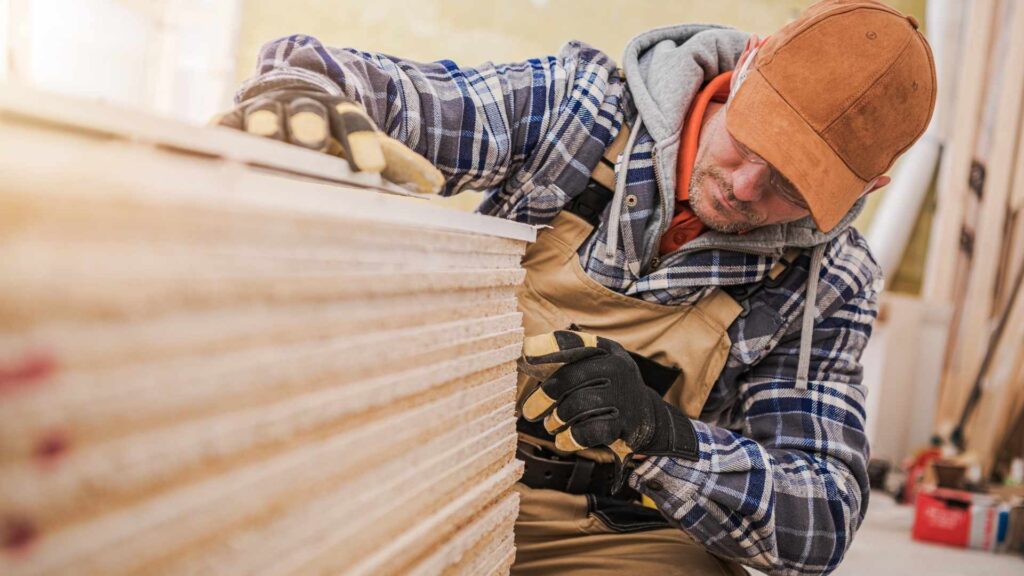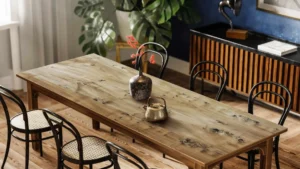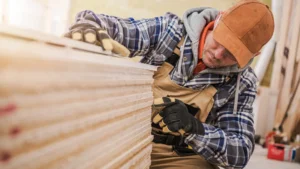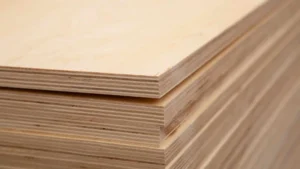In the world of home improvement and furniture making, plywood plays a crucial role. However, with the myriad of options available in the market, choosing the right plywood can be a daunting task. This guide will walk you through the essential steps to ensure you select the best quality plywood for your projects.
1. Understand Your Project Requirements
Before diving into plywood selection, it’s crucial to understand the specific needs of your project:
- Location: Is it for indoor or outdoor use?
- Moisture Exposure: Will it be exposed to water or high humidity?
- Load-Bearing: Does it need to support significant weight?
- Aesthetics: Will the plywood be visible or covered?
Understanding these factors will guide you towards the right type of plywood.
2. Familiarize Yourself with Plywood Grades
Plywood comes in various grades, each suited for different applications:
- MR (Moisture Resistant): Suitable for areas with occasional moisture exposure
- BWR (Boiling Water Resistant): Offers better water resistance than MR grade
- BWP (Boiling Water Proof) or Marine Grade: Ideal for high moisture environments
- Fire-Retardant: Designed to withstand and slow the spread of fire
- Flexiply: Perfect for curved or rounded furniture designs
Choose the grade that best matches your project’s requirements.
3. Check the Plywood Thickness
Plywood thickness ranges from 4mm to 25mm. The right thickness depends on your project:
- Thinner plywood (4-12mm): Suitable for decorative purposes or lightweight applications
- Medium thickness (15-18mm): Ideal for most furniture and cabinetry
- Thicker plywood (19-25mm): Best for heavy-duty applications or structural use
Remember, more plies generally mean better strength and stability.
4. Assess the Surface Quality
The surface quality of plywood affects both its appearance and functionality:
- Look for smooth, uniform surfaces without bumps or irregularities
- Check for any visible defects like knots, patches, or voids
- For visible applications, consider the grain pattern and overall aesthetics
High-quality plywood should have a consistent appearance across the entire sheet.
5. Examine the Edge Quality
The edges of plywood can tell you a lot about its quality:
- Look for tight, uniform layers with minimal gaps
- Avoid plywood with large voids or inconsistencies between layers
- Check for any signs of delamination or separation between plies
Well-constructed edges indicate overall quality and durability.
6. Verify the Density and Weight
The density of plywood affects its strength and durability:
- Lift one side of the sheet to assess its weight
- Heavier plywood usually indicates higher density and better quality
- Be wary of plywood that feels unusually light for its size
Remember, while density is important, extremely heavy plywood may not be suitable for all applications.
7. Perform a Sound Test
A simple sound test can reveal the internal quality of plywood:
- Gently knock on the center of the sheet
- Listen for a solid, consistent sound
- Avoid plywood that produces hollow or inconsistent sounds, which may indicate internal voids
This test can help you identify hidden defects not visible from the surface.
8. Look for Certification Marks
Reputable plywood manufacturers often have their products certified:
- Check for ISI (Indian Standards Institute) marks on Indian plywood
- Look for certifications from organizations like FSC (Forest Stewardship Council) for sustainably sourced wood
- Be cautious of products without any recognized certifications
These marks ensure that the plywood meets specific quality and safety standards.
9. Consider Environmental Factors
In today’s eco-conscious world, consider the environmental impact of your plywood choice:
- Look for plywood made from sustainably sourced wood
- Consider options with low formaldehyde emissions for better indoor air quality
- Check for eco-friendly certifications or labels
Environmentally friendly plywood can be both high-quality and responsible.
10. Evaluate the Manufacturer’s Reputation
The reputation of the plywood manufacturer can be a good indicator of quality:
- Research the brand’s history and customer reviews
- Look for manufacturers with a track record of consistency and quality
- Consider the warranty and after-sales support offered
A reputable manufacturer is more likely to produce reliable, high-quality plywood.
11. Compare Prices Wisely
While price shouldn’t be the only factor, it’s an important consideration:
- Compare prices across different brands and retailers
- Be wary of prices that seem too good to be true – they often are
- Consider the long-term value rather than just the upfront cost
Remember, investing in quality plywood can save money in the long run by reducing the need for repairs or replacements.
12. Seek Expert Advice
When in doubt, don’t hesitate to seek professional guidance:
- Consult with experienced carpenters or woodworkers
- Ask for recommendations from reputable home improvement stores
- Reach out to plywood manufacturers for specific product information
Expert advice can help you make an informed decision, especially for complex projects.
Final Words
Choosing the right plywood is crucial for the success of your project. By following these steps, you can ensure that you select high-quality plywood that meets your specific needs. Remember, the best plywood combines durability, functionality, and value.
When it comes to reliable, high-quality plywood that ticks all the boxes, look no further than Duroply. With our commitment to excellence and wide range of options, Duroply ensures that your projects are built on a foundation of quality, durability, and trust.







